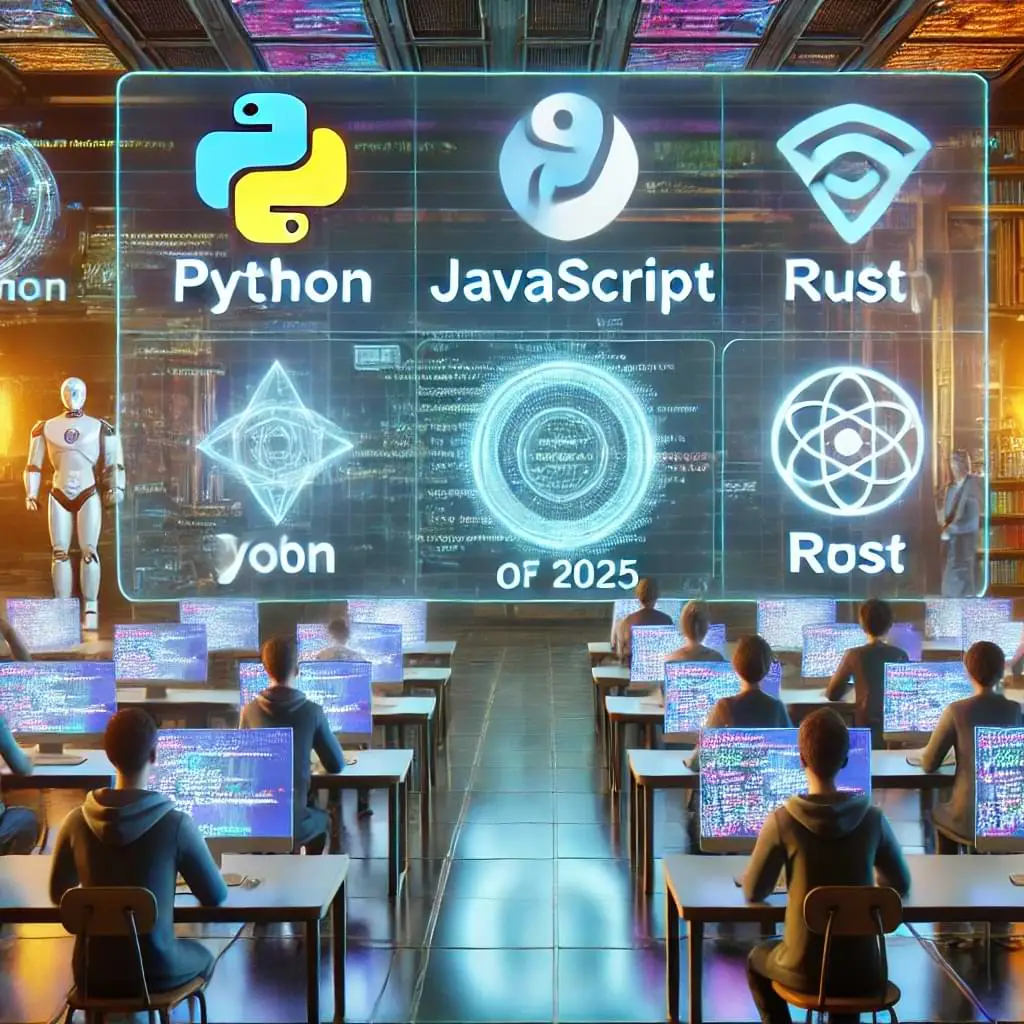As technology evolves, the demand for programming skills continues to grow. Whether you’re a beginner or an experienced developer, staying updated with the most in-demand languages is essential for career growth. In 2025, several languages will dominate due to their versatility, efficiency, and relevance to emerging technologies.
In this article, we’ll explore the top 10 programming languages, their applications, and the career opportunities they offer.
1. Python Still on top for its versatility and simplicity.
- Use Cases: Data science, AI, web development, machine learning, automation.
- Key Features:
- Extensive libraries (NumPy, Pandas, TensorFlow).
- Readable and beginner-friendly syntax.
- High demand in AI, ML, and data analytics.
- Career Opportunities:
- Data scientist, AI engineer, backend developer, automation expert.
Why Learn It? Python continues to dominate AI, ML, and data analytics, making it a must-know language.
2. JavaScript
The backbone of web development.
- Use Cases: Frontend and backend web development, mobile apps, server-side apps.
- Key Features:
- Frameworks like React.js, Angular, and Vue.js.
- Asynchronous programming (Node.js).
- Strong support for building interactive UIs.
- Career Opportunities:
- Frontend or full-stack developer, web engineer, mobile app developer.
Why Learn It? Essential for building dynamic web applications and cross-platform solutions.
3. Java
The enterprise favorite still going strong.
- Use Cases: Android development, enterprise applications, backend services.
- Key Features:
- Platform independence (Write Once, Run Anywhere).
- Secure and robust for large-scale applications.
- Versatile ecosystem (Spring, Hibernate).
- Career Opportunities:
- Software engineer, Android developer, backend developer.
Why Learn It? Despite new competitors, Java remains vital for enterprise and mobile development.
4. C++
Power and performance for system-level programming.
- Use Cases: Game development, real-time systems, operating systems, IoT.
- Key Features:
- High performance and memory management.
- Low-level control over hardware.
- Widely used in embedded systems.
- Career Opportunities:
- Game developer, system programmer, embedded systems engineer.
Why Learn It? C++ remains crucial for high-performance and resource-intensive applications.
5. Go (Golang)
Gaining massive popularity in cloud and backend development.
- Use Cases: Cloud services, DevOps, distributed systems, microservices.
- Key Features:
- Fast execution and concurrency support.
- Simplicity with robust performance.
- Growing adoption in cloud-native applications.
- Career Opportunities:
- Cloud engineer, backend developer, DevOps engineer.
Why Learn It? Go is becoming the language of choice for cloud-based applications and scalable systems.

6. Rust
The rising star for memory-safe programming.
- Use Cases: System programming, web assembly, embedded systems, blockchain.
- Key Features:
- Memory safety without garbage collection.
- Performance comparable to C and C++.
- Growing in popularity for web3 and blockchain.
- Career Opportunities:
- Blockchain developer, systems engineer, embedded programmer.
Why Learn It? Rust’s safety, speed, and reliability make it ideal for performance-critical applications.
7. Kotlin
The official language for Android development.
- Use Cases: Android apps, backend services, cross-platform development.
- Key Features:
- Concise and expressive syntax.
- 100% interoperable with Java.
- Growing community and Google support.
- Career Opportunities:
- Android developer, mobile app engineer.
Why Learn It? With Google’s endorsement, Kotlin is the preferred language for Android development.
8. Swift
The go-to language for Apple ecosystem.
- Use Cases: iOS app development, macOS, watchOS, tvOS.
- Key Features:
- Modern syntax and safety features.
- Faster and safer than Objective-C.
- Growing ecosystem for Apple apps.
- Career Opportunities:
- iOS developer, Apple ecosystem engineer.
Why Learn It? Swift dominates the Apple ecosystem, offering lucrative opportunities for app developers.
9. TypeScript
JavaScript with static typing – the future of front-end.
- Use Cases: Large-scale web apps, frontend frameworks (Angular, React).
- Key Features:
- Static typing for reliability.
- Improved code scalability and maintainability.
- Enhanced IDE support and debugging.
- Career Opportunities:
- Frontend developer, full-stack developer.
Why Learn It? TypeScript offers better scalability and reliability for large-scale web applications.
10. SQL
The core language for data management.
- Use Cases: Database management, data analysis, ETL processes.
- Key Features:
- Universal database querying language.
- Essential for backend and data roles.
- Works with MySQL, PostgreSQL, MSSQL, and more.
- Career Opportunities:
- Data analyst, database administrator, backend engineer.
Why Learn It? SQL is essential for working with data, making it a must-have skill in most IT jobs.

Emerging Languages to Watch in 2025
- Dart → Growing with Flutter for cross-platform development.
- Julia → Increasing in scientific computing and data science.
- R → Popular in statistical analysis and data visualization.
- Shell Scripting (Bash) → Essential for DevOps and automation.
Conclusion
In 2025, the Top 10 Programming Languages will include Python, JavaScript, and Java, which will remain dominant due to their versatility and industry demand. Meanwhile, Go, Rust, and TypeScript are rapidly gaining traction in cloud computing, web development, and systems programming.
Key Takeaway: If you’re looking to future-proof your career, mastering these Top 10 Programming Languages will offer excellent job prospects and growth opportunities.
Enjoyed this blog? Share your thoughts below! For more exciting tech insights, explore our related blogs.






No responses yet